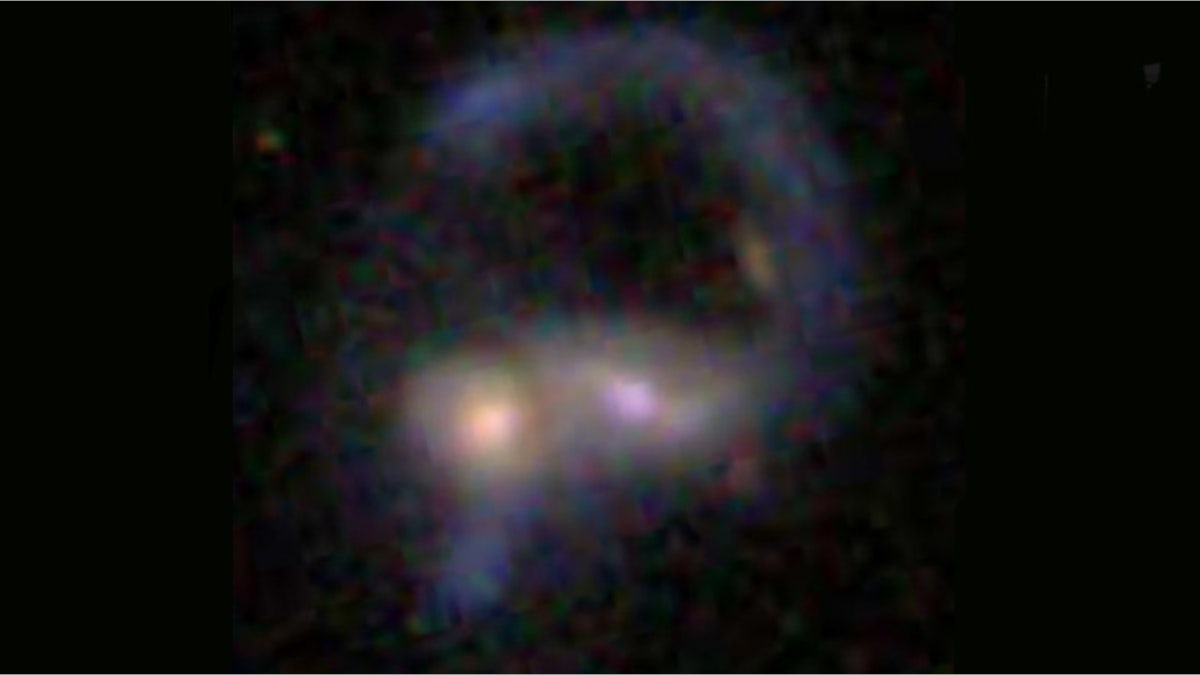
(SLOAN DIGITAL SKY SURVEY)
Ol’ Nessie isn’t known for making herself easy to find, but it looks like she recently popped up in an image from the Sloan Digital Sky Survey — and my, how she’s grown!
First catching the eye of summer student Roberto Rodriguez, undergraduate at the University of Puerto Rico, working with Arecibo astrophysicist Rhys Taylor, this monstrosity is actually a distant galaxy 700 million light-years away, and is about 200,000 light-years across — nearly twice the width of the Milky Way. Rodriguez is participating in Arecibo’s 10-week “Research Experience for Undergraduate” program.
Top 10 Weirdest Mars Illusions and Pareidolia
Its long, curving “neck” and bright dual cores (or are they hearts?) may be the result of a galactic collision — or it could be a smaller neighboring galaxy that’s being eaten by the larger, connected by a bridge of stars and gas. Or the entire thing could be completely separate cosmic structures, visibly merged together only through our perspective from Earth.
In all reality, we really don’t know what exactly this is. As intriguing as it may be, it’s only a preliminary observation with little to no follow-up research.
“The honest truth is we just don’t know what’s going on here,” Rhys Taylor writes on his blog Physicists of the Caribbean. “It’s probably the result of two or more galaxies colliding and merging, which is known to be able to produce really weird shapes. Maybe the “head” of Nessie is a smaller dwarf galaxy which is being ripped apart by a larger one, leaving behind a trail of stars to form the “neck”. Maybe. It’s going to take a lot of work to figure out exactly what’s happening. Which is fun.”
“To quote Terry Pratchett,” Rhys adds, “‘It wouldn’t be research if you knew what you were doing.’”
Top 10 Animal Mysteries and Myths Explained
As to whether it looks more like a prehistoric plesiosaur or a scorpion about to strike, well… that’s all very subjective. What’s not up for dispute is the fact that there are many strange and fantastic things yet to be discovered in our universe, all just waiting for us to look and find them.
